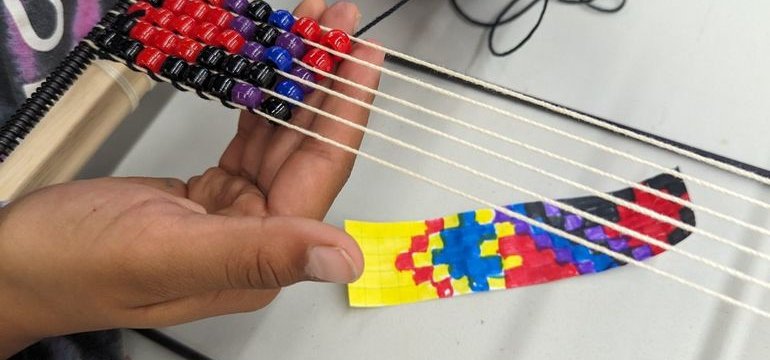
Métis Culture Camp builds connections between youth and Elders
Language revitalization continues to be on the rise. And, the revitalization of Michif is no exception. Not only does learning a language build connectedness to culture, there is significant proof that it also has the power to instill pride in youth.
Gail Johnson, Métis President of Local 269, took this into account when she helped create Michif Children’s Culture Day Camp as a part of the Connecting through Métis Culture initiative.
“The inspiration for the camp was to give children the opportunity to hear the Michif language used daily and hopefully inspire some children to add new words to their daily lives,” says Johnson, about the week-long camp that took place this past July in Prince Albert. “We also wanted to provide children the opportunity to participate in their culture and language by interacting with Elders.”
Building intergenerational learning techniques is beneficial for communities, especially considering many Indigenous languages are at the threat of extinction. “Some children hadn’t heard their language spoken before the camp,” Johnson says. “One of our goals was to ensure children would be able to introduce themselves in Michif at the end of the week.”
In addition to language learning, Elders also carry traditional knowledge and practice with them, so their involvement was crucial for Johnson. “Elders hold the knowledge of our culture, while also representing our communities’ cultural values and being a role model,” she says.
Elaine Campbell, one of the Elders invited to share at the camp, believes that cultural knowledge instills a strong sense of pride in young learners. “The children that have pride in learning develop a pattern that helps them succeed in adulthood while also teaching them how to have empathy for other people,” she says.
To complement the language learning initiatives, a variety of cultural elements were introduced to the participants throughout the week. Children were able to learn lessons on native plants, beading, jigging, sash-weaving and pointillism (a style of art that uses dots to form a picture). Incorporating other elements of culture was a natural way to explore history and traditions, explains Johnson.
“Passing on cultural practices gives everyone a sense of belonging,” says Brenda McDougall, an Elder involved with the camp. “It promotes the passing on of important knowledge, skills, craftsmanship and language. It helps to shape who we are today and where the future may take us.”
By the end of the camp, children had a better understanding of their cultural history and were able to introduce themselves in Michif. “Meeting one of the youngest students two months later and having her say the Michif words she learned at camp was so great,” Johnson says. “And there were several children that said they were going to learn more about activities we did and continue to participate in them outside of the camp.”
Cultural camps build strong communities who are engaged in history and tradition, and after plenty of positive feedback from participants and their families, Johnson plans to ensure there continues to be an abundance of cultural learning opportunities available for future generations.
The North Saskatchewan River Métis Nation Local 269 received project funding from the Métis Cultural Development Fund, administered by Gabriel Dumont Institute, on behalf of SaskCulture, with funding from Sask Lotteries.


 Engage - Volume 14, Issue 2, Spring 2024
Engage - Volume 14, Issue 2, Spring 2024